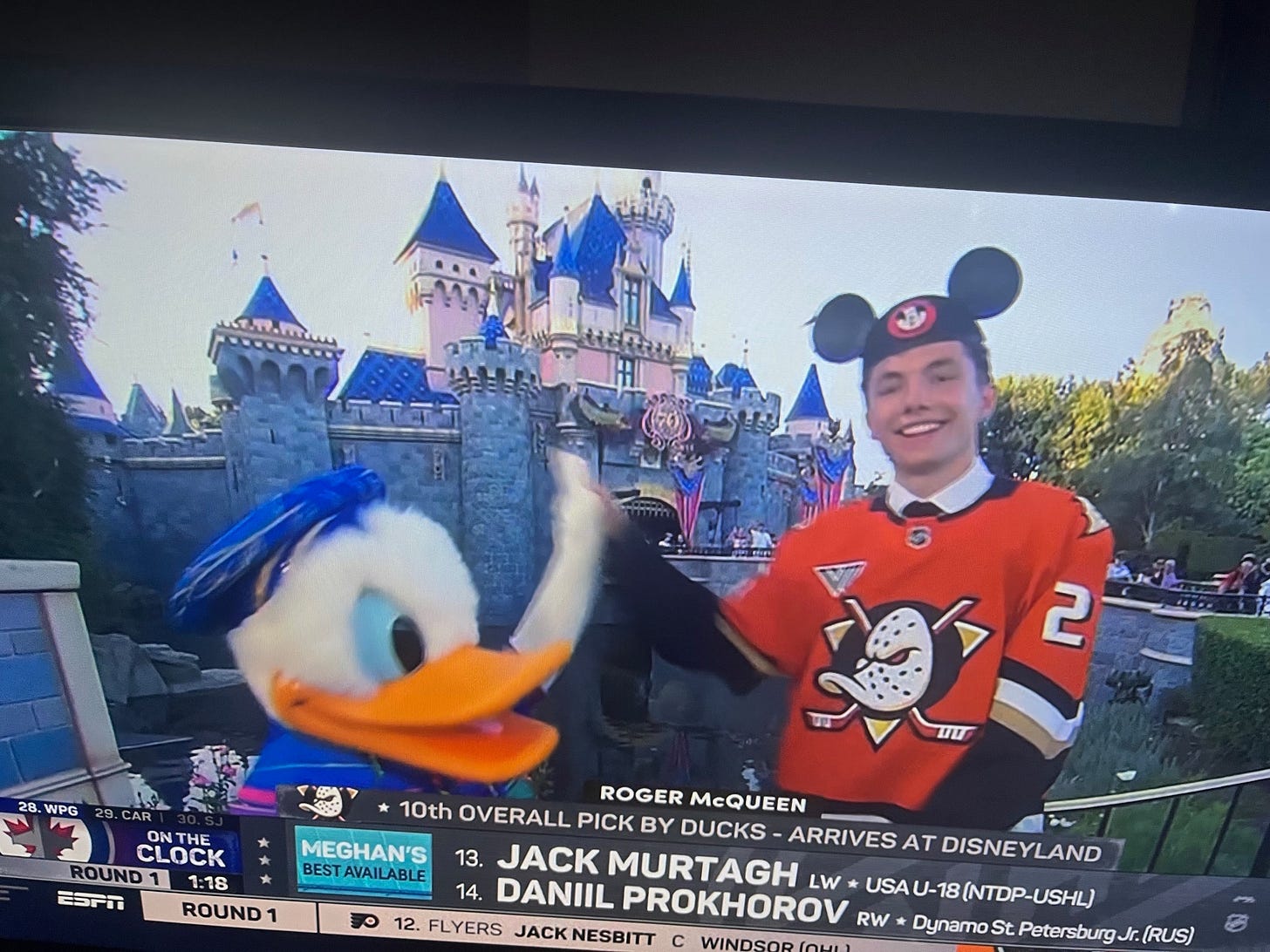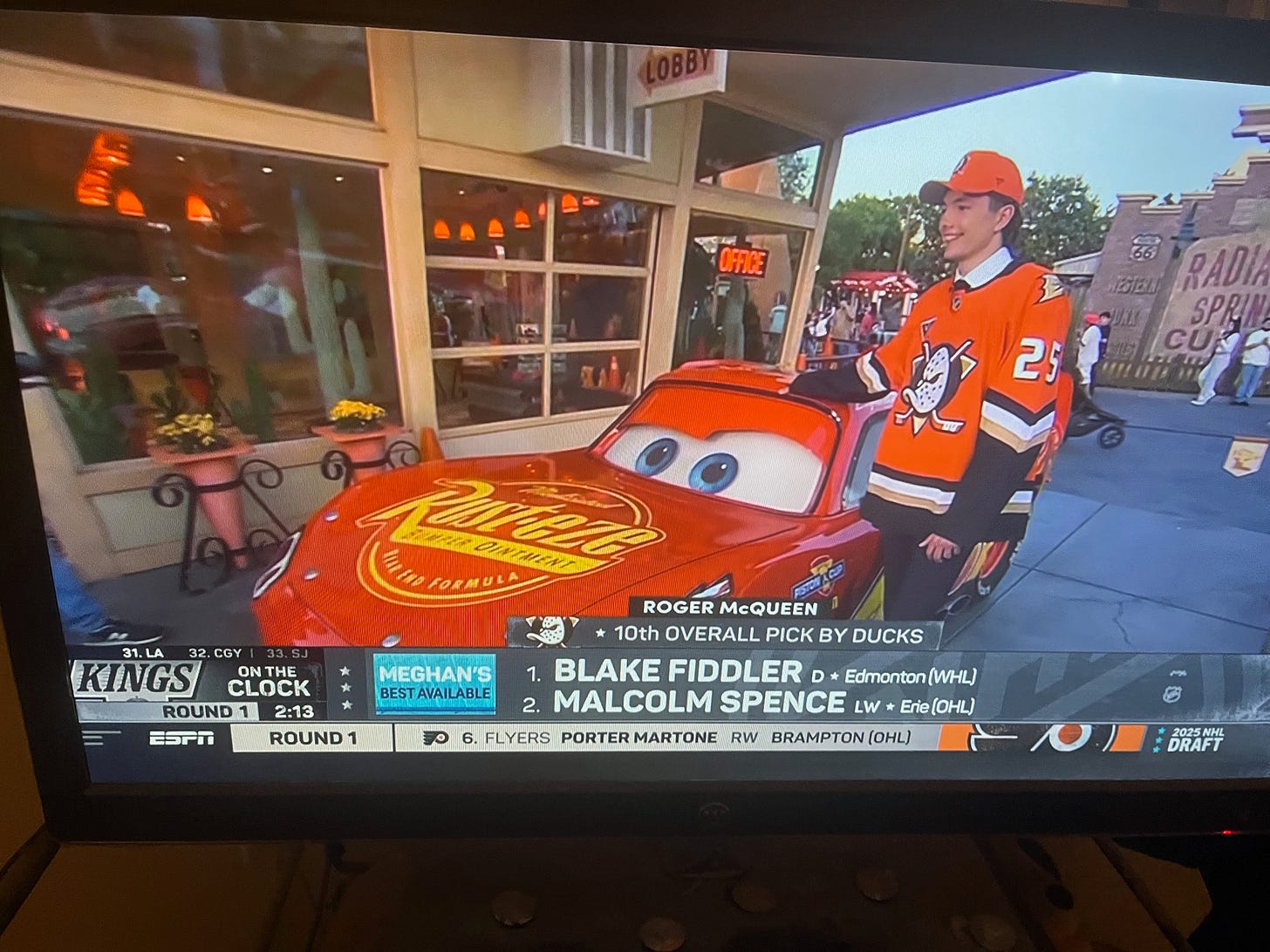Labor peace is the right path for the NHL
After triggering a hat trick worth of contentious lockouts, Commissioner Gary Bettman recognized he had little to gain by losing games or a season to another collective bargaining dispute.
In 1994 Gary Bettman was the relatively new sheriff in town and was intent on showing who was in charge when he took the dramatic step of halting negotiations with the players’ association on a new collective bargaining agreement and locked players out for 103 days, delaying the start of the 1994-95 season.
Hired away from the NBA with the mission of modernizing the NHL’s weak marketing and media ventures, Bettman had become the NHL’s first commissioner on Feb. 1, 1993 (previous leaders had the title of president). Heaven knows, the insular, hidebound league urgently needed dynamic leadership, fresh ideas, and new revenue sources.
Maybe because he was didn’t know team owners well enough to build a strong power base, maybe because he didn’t have enough time to drag owners into the 20th century even as the century was coming to an end, Bettman didn’t have the support to get any significant economic concessions from players as the result of that lockout. He certainly didn’t get the luxury tax or salary cap he had helped architect for the NBA, a feature NHL executives had hoped he’d carry over for them. The league salvaged a 48-game season from a lose-lose situation.
By 2004, when the math wasn’t mathing well enough for a league that spanned two countries and faced a daunting array of economic realities, he imposed another lockout. This time, he had owners lined up behind him. They didn’t cave.
When negotiations didn’t produce the concessions he claimed were essential for the league’s survival, he took a drastic step that gave the NHL the distinction of being the first major North American sports league to wipe out an entire season. Bettman insisted he had to do it, that the NHL needed a hard salary cap and other economic guarantees for owners in order to survive. He lost the entire 2004-05 season to win a bitter victory and get that cap. Fans were the losers, as always.
Still, that wasn’t enough. By now the league’s unquestioned leader, he delayed the start of the 2012-13 season—and the raising of the Kings’ first Stanley Cup banner—by imposing yet another lockout. Bettman claimed players were receiving an insupportably large percentage of revenues, using creative accounting and pretty pie charts to hammer home his point in the media. This time, he got players to accept a 50-50 split of stipulated hockey-related revenues. Again, an agreement was reached in time to stage a 48-game season.
The leadership of the NHL Players’ Assn. has changed several times over the last three decades, but Bettman has remained a constant. And he has finally altered his lockout-happy strategy to put collaboration ahead of confrontation.
With fans weary of labor disputes and the league having reached as solid a state as it ever has, he knew that yanking the NHL off the crowded sports landscape in order to wrest a few dollars away from players couldn’t have brought the league bigger benefits than it could gain by continuing along a smooth path. The announcement on Friday of a four-year extension of the current collective bargaining agreement between the league and the NHLPA (pending expected approval from both sides) signaled a new and welcome approach for Bettman and gave fans assurance they won’t have to endure another lockout anytime soon.
He did the right thing at the right time, giving the NHL its best shot at continued growth domestically and internationally with players poised to return to the world stage and represent their homelands at the 2026 Milano-Cortina Winter Olympics and again in 2030 in the French Alps.
As has become customary at every NHL event, fans booed Bettman when he appeared onstage at the Peacock theater in downtown Los Angeles on Friday to launch the annual entry draft. I’ve been critical of him over the years, but this was one occasion he deserved applause, even if the cringe-worthy format of the newly drafted players meeting their new bosses remotely via a video screen was an esthetic flop and the first round of the decentralized draft took nearly 4 1/2 hours to complete.
“I think it’s fair to say that we identified pretty early on the things that were important to each of us and I think we respected that,” Bettman told reporters Friday as he sat alongside NHLPA boss Marty Walsh.
“I’m not surprised based on the relationship we’ve built over the last couple of years that we were able to do this, but I think it bodes extraordinarily well for the game going forward.”
The extension, announced a few hours before the draft, will take effect on Sept. 16, 2026 and will run through Sept. 15, 2030. By then, Bettman, 73, might have turned over the keys to the league to his deputy, Bill Daly. Knowing Bettman, maybe not.
Some new provisions of the extension have been widely reported but weren’t verified by either side Friday. Among the most important new details is an agreement to maintain the salary cap during the playoffs, which previously wasn’t the case. Teams could place players on long term injured reserve and use the resulting cap savings to go over the cap and bulk up their lineups before the playoffs began. That produced some miraculous medical recoveries on the eve of postseason play, when the cap vanished. Removing that loophole makes sense. Because the terms agreed upon in the extension don’t take effect immediately, general managers will have a little while to figure out if they get around this and other changes.
Here’s a good news/bad news item: The preseason will be shorter, going from a maximum of eight games to four, but each team’s regular-season schedule will add two games, for a total of 84. The season supposedly will start in late September, which the NHL has avoided mostly to avoid competing with college football and the NFL.
Hockey attendance has historically grown after Christmas, when playoff races crystallize. But an earlier start should lead to an earlier finish, maybe in early June instead of the middle of the month, and that’s a good thing. The extra games likely will be division games for each team, playing up established rivalries while still allowing each team to play at least two games against every other team. (Yes, there were seasons when this didn’t happen, which defies belief).
Also of note is a reduction in the maximum length of players’ contracts. As it now stands, players could sign for up to eight years with their own team or up to seven years as a free agent moving to a new team. That will change to seven years and six years, respectively. And say goodbye to those wonderfully goofy stories of former college goaltenders and part-time Zamboni drivers being plucked out of obscurity to suit up as an emergency backup: Each team will be allowed to have a full-time EBUG (emergency backup goalie) should the need arise.
The draft, which will continue on Saturday with rounds two through seven, featured a class that was considered strong at the top but not exceptionally deep. No. 1 pick Matthew Schaefer, chosen by the New York Islanders, is a defenseman, but seven of the top 10 picks were centers. That includes the Ducks’ top selection, 6-foot-5 Roger McQueen of the Brandon Wheat Kings. McQueen won’t be pressured to provide immediate help to the Ducks, who have assembled an enviable collection of prospects, so he will have time to refine his multiple skills.
A back injury limited his playing time last season, and that could be a long-term concern. He got an immediate trip to the Disneyland Resort, and the ESPN broadcast later showed him arriving in Anaheim to get his mouse ears. He traveled by helicopter, sparing him the joys of traveling on the 5 on a Friday night. Lucky him.
(Roger McQueen meets Lightning McQueen. Can’t make this up).
“Roger is an extremely unique player with his combination of size, skating, vision and talent,” Ducks general manager Pat Verbeek said in a news release. “We are confident he brings a versatility in his game matched with raw skill that will translate to being a top player in the NHL. Roger had a difficult season with an injury, but has matured through adversity and will be a better player and person for that.”
The Kings were scheduled to select 24th but traded that selection to Pittsburgh in exchange for the 31st and the 59th picks. With the 31st pick, the Kings chose right-shooting defenseman Henry Brzustewicz, a Michigan native who played for the Memorial Cup champion London Knights last season. Brzustewicz is nowhere near ready to replace Vladislav Gavrikov should Gavrikov leave when free agency begins on July 1, as has been frequently rumored the past few days. But the Kings need more muscle on the back line, and they believe, after watching him the past two seasons, that there could be a spot on the roster someday for 6-foot-2, 225-pound Brzustewicz.
“If you’re not picking in the top 10 of the draft, you’re not seeing the guys for three years,” Mark Yannetti, the Kings’ director of amateur scouting, said during a Zoom call with reporters. “He would be a consideration I would say a minimum of three years and he would probably fall in that three-to-five-year 3-5 plan strictly.” Yannetti added that Brzustewicz’s power and skating skills might shorten that timetable a bit.
General manager Ken Holland, presiding over his first draft with the Kings, said he’s firmly convinced that a team can’t have too many defensemen. “So when we had an opportunity to draft Henry we jumped on it,” Holland said. “The L.A. Kings develop plyers as good as any team in the National Hockey League….We believe he can develop into an NHL defenseman.”
It takes probably five years to fully evaluate a draft class, to see which players show they’re capable of carrying a franchise, which have peaked young, which grow and develop and can successfully make the leap to the NHL. There might be a superstar among the kids drafted on Friday and those hoping to be picked on Saturday.
No matter how it turns out, Friday might be most clearly remembered for the announcement of the labor deal extension and the guarantee of labor peace. It’s up to the NHL to make the most of this chance to flourish without the threat of a lockout looming in the background.






I really enjoyed the big picture view of the lockouts. This passage was especially good, I just loved reading it.
"Heaven knows, the insular, hidebound league urgently needed dynamic leadership, fresh ideas, and new revenue sources.
Maybe because he was didn’t know team owners well enough to build a strong power base, maybe because he didn’t have enough time to drag owners into the 20th century even as the century was coming to an end..."
Hidebound!!! Absolutely great, what a pleasure to read.
Thank you. I learned the history I needed and appreciate your thoughts on Bettman. A lot of info well explained and entertaining! And perhaps before he retires, Bettman won’t be booed. ;)